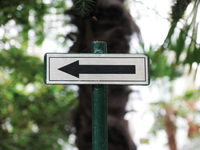Guidance
When you get back from a trip, you're usually bursting to tell everybody all about it and share your photos. Organizing your pics by location makes it easier to describe your adventures.
|

© sans5 - freeimages.com
When you get back from a trip, you're usually bursting to tell everybody all about it and share your photos. Organizing your pics by location makes it easier to describe your adventures.
Classifying your photos begins as soon as you get home from vacation. A good approach is to create a virtual map showing the stages of your trip embellished by photos of specific locations. With the right know-how and tools, you can quickly create eye-catching results.
To assemble the map with images, you need the proper information, such as timestamps, geographical longitude and latitude data, and viewing angles and directions. Linking objects with this data is called geotagging, which makes it easier to work with media data.
Information for geotagging comes from digital camera or smartphone sensors. A GPS module is already a standard feature of many mobile devices. You can purchase a digital camera with GPS for a few hundred dollars. The sensor data that the devices collect usually ends up automatically in the Exchangeable Image File Format (Exif) file for each photo [1].
[...]
Pages: 4
Routino is an offline route-planning application that uses OpenStreetMap data to calculate efficient and convenient routes. We discuss what this software can do.
Once a regular part of every classroom, the good old world globe has been almost completely replaced by Google Maps. With the Marble program, the globe has made something of a timely comeback.
GIMP by itself can already do a lot. With plugins, you can extend the free image editor with complex functions, most of which allow you to see the final results before you apply them.
If the default Ubuntu image viewer doesn't cut it for you, there are plenty of other excellent image viewing applications you can choose from.
An old EeePC with Linux is great solution for creating a powerful off-road navigation system. Putting together some of the components involves some tricks, however.
© 2025 Linux New Media USA, LLC – Legal Notice